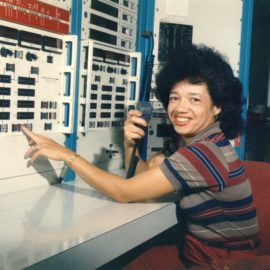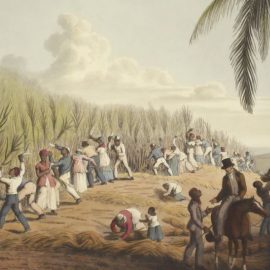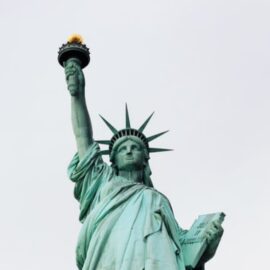

This article is an excerpt from the Shortform book guide to "His Very Best" by Jonathan Alter. Shortform has the world's best summaries and analyses of books you should be reading.
Like this article? Sign up for a free trial here.
Why didn’t Rosalynn Carter accept Jimmy’s first marriage proposal? How did this couple redefine the role of the First Lady?
In His Very Best, biographer Jonathan Alter tells the story of Jimmy and Rosalynn Carter. He discusses their courtship and their time together while Jimmy served in the US Navy, the White House, and beyond.
Read on to learn about the shared life of this historic couple.
Jimmy and Rosalynn Carter
In Alter’s discussion of Jimmy and Rosalynn Carter’s relationship, he describes how Carter’s impersonal side would be tempered by the woman who’d be his best friend and confidante for more than three-quarters of a century. Future First Lady Rosalynn Carter would be Jimmy Carter’s equal and hand-in-hand partner from the start of his naval career through the highs and lows that followed.
Early Life Together
Rosalynn, also a native of Plains, admired Carter from afar because he’d been able to escape their small town. However, she turned down his first marriage proposal because she wanted to finish college first. Two months later, she changed her mind, and they married after Jimmy Carter’s graduation from the Naval Academy. Rosalynn and Carter grew more politically liberal as they were exposed to a wider range of cultures outside the American South at postings in Maryland, Connecticut, and Hawaii.
| The Carters See America While the saying goes that “travel broadens the mind,” psychologists suggest that it may be more accurate to say that when you move to a different region, whether in your own country or another, you slowly adopt a new persona that’s reflective of the cultures and values around you. This effect can be especially powerful for those who leave their home countries altogether and develop an outsider’s perspective. While the Carters were never stationed overseas, the American South of the mid-20th century was strongly distinct from the rest of the US in terms of politics and culture, especially when it came to race relations. During the 1940s, leaving the South was in many ways similar to moving to a different part of the world. In American Nations, Colin Woodward identifies 11 different “sub-nations” within the US that persist to this day, affecting the country’s political divisions. |
Carter’s naval career and his life outside the South would end due to his father’s failing health. In 1953, Carter returned to Plains to take care of James, Sr., in his final days. He ultimately decided to leave the Navy and take his father’s place as a pillar of his town.
At first, leaving the Navy was a difficult adjustment, moving from the independence of cosmopolitan city life back to the rural, small-town environment which Carter and Rosalynn had endeavored to escape, made worse by the financial straits of his father’s business and a drought that nearly bankrupted the family farm. Rosalynn became the family bookkeeper while devising ways to keep their business afloat until it turned profitable again. Meanwhile, Carter rose to leadership roles in church and civic groups, a path that kickstarted his political career.
(Shortform note: Civic groups focused on community service of the kind that Carter participated in are often nonprofit, volunteer organizations that range from informal clubs to national institutions. Their purposes can range from promoting business in a particular community or feeding the needy in a neighborhood area to advocating for the environment or social justice on a global scale. In Democracy in America, published in 1835, Alexis de Tocqueville observed the crucial role that civic associations play in American political life by uniting people around shared interests, values, and issues rather than individual leaders.)
In the White House
The most dramatic alterations Carter made to the executive branch were to redefine the roles of the Vice President (VP) and First Lady. Carter also included Rosalynn in all briefings and cabinet meetings—except those for which she didn’t have a security clearance—and regularly consulted her before making important decisions of state.
(Shortform note: While there were First Ladies who engaged with policy issues before Rosalynn Carter—for example, Eleanor Roosevelt—it has now become expected that the President’s spouse will use their platform to advocate on behalf of various causes. While Rosalynn Carter was sometimes criticized for her political activism, she replied that the role of First Lady should grow to reflect the changing role of women in society.)
Growing Old Together
On February 18, 2023, at the age of 98, Carter went into hospice care at his home in Plains, Georgia. While Carter’s health issues haven’t been disclosed, the purpose of hospice care is to make a person’s final days or months as comfortable as possible rather than fighting to prolong their life. It was later announced that Rosalynn Carter, at the age of 95, was suffering symptoms of dementia. Jimmy Carter’s failing health was met with an outpouring of tributes by politicians and public figures. In May 2023, the Carters’ grandson reported that Jimmy and Rosalynn were happy together and appreciative of all the support they’d received.

———End of Preview———
Like what you just read? Read the rest of the world's best book summary and analysis of Jonathan Alter's "His Very Best" at Shortform.
Here's what you'll find in our full His Very Best summary:
- A fresh perspective on Jimmy Carter's time as president
- How Carter's early life shaped his political career
- The long-term effects of what Carter accomplished while president






